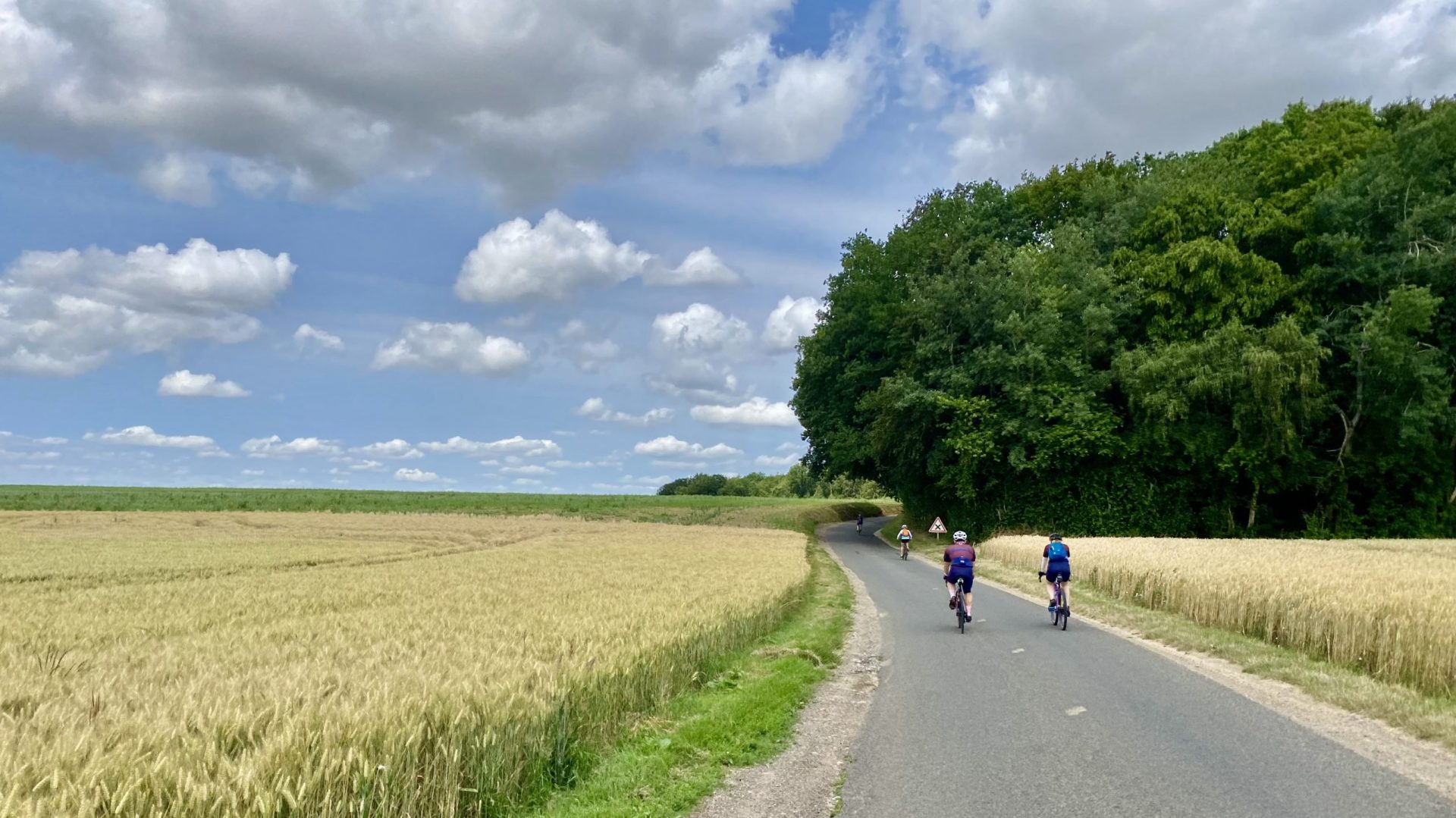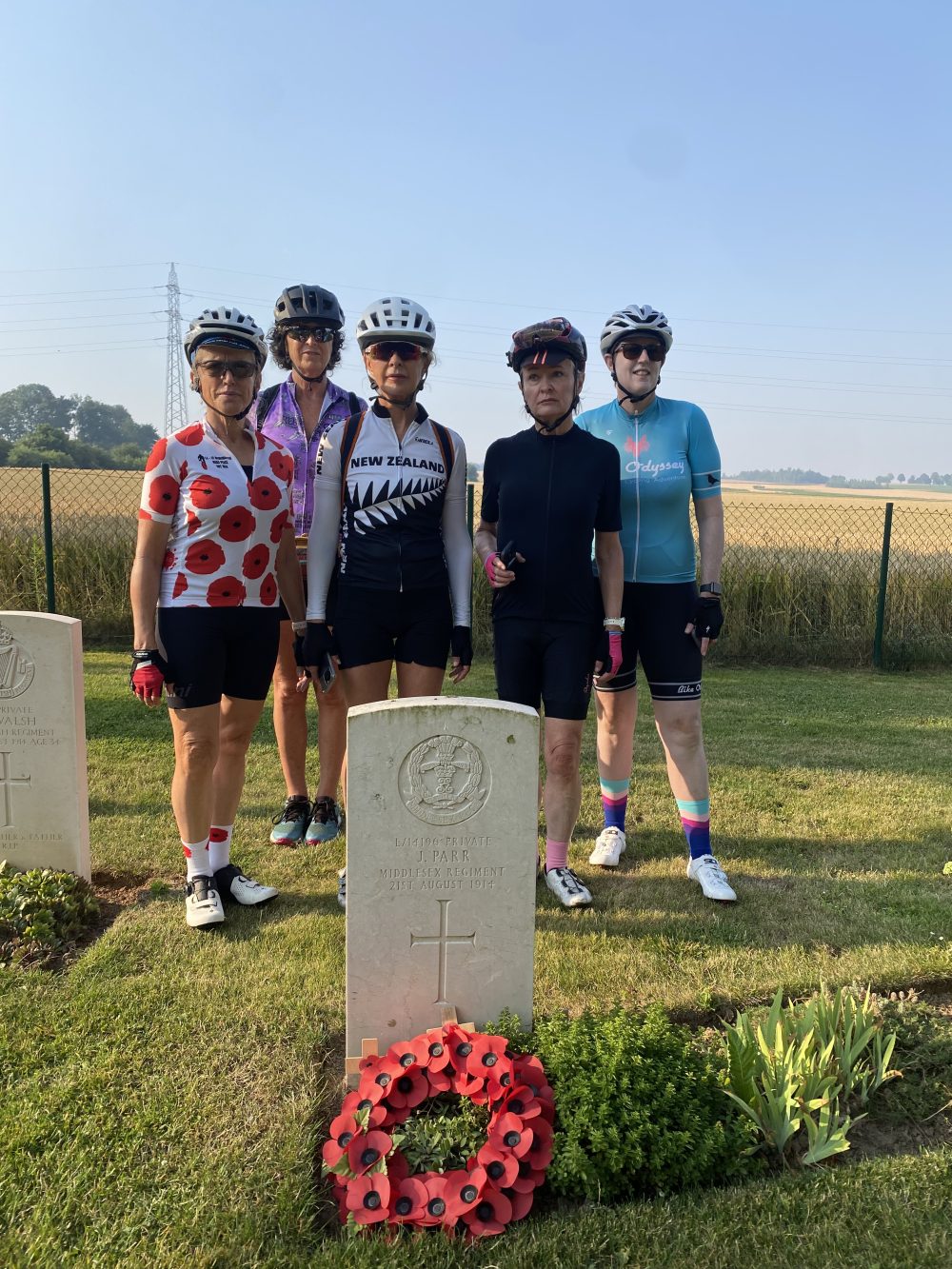Today’s ride was 102 km with 1100 vertical metres of climbing from Mons to Dinant on the River Meuse. We started with a short ride out to Saint Symphorien Cemetery to visit the graves mentioned in my last post. It was easily the most beautiful war cemetery that we had visited so far on our trip.

Now how do we get out the gate again….
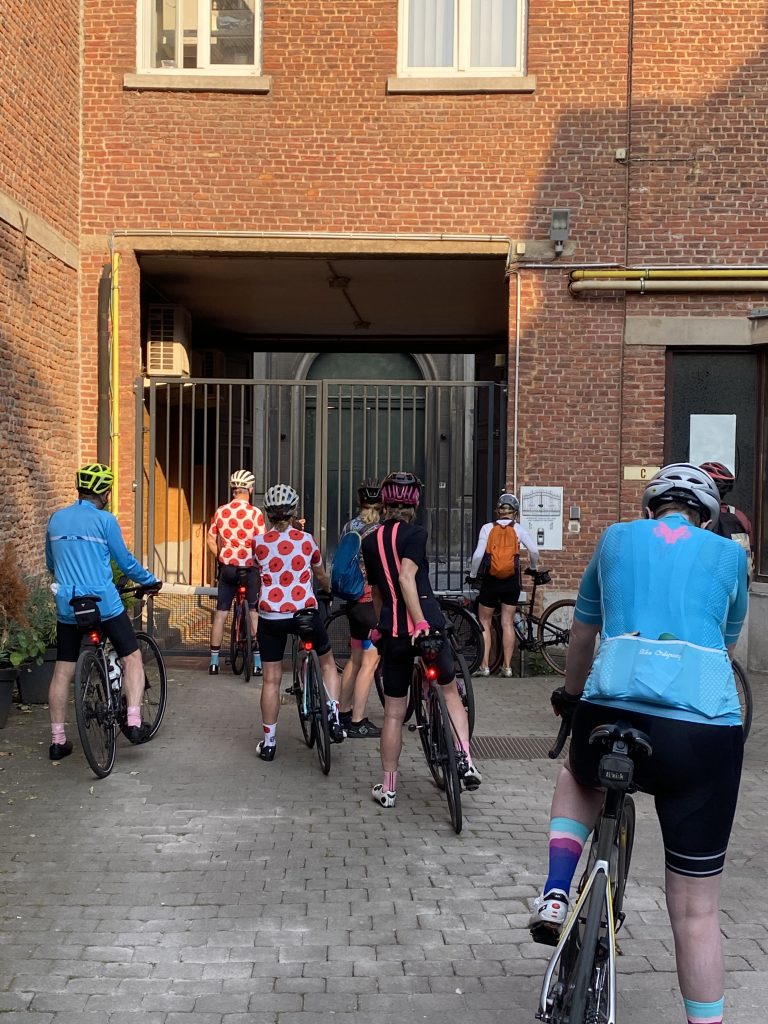
Our first stop was at the cemetery about 5 km south east of Mons.

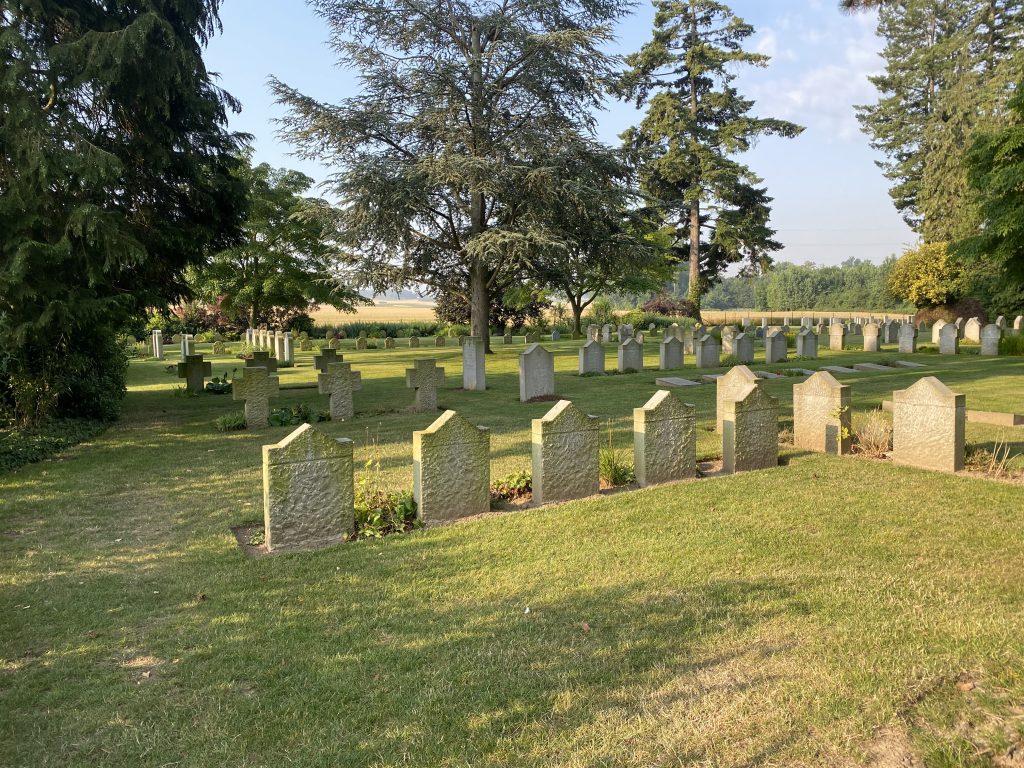
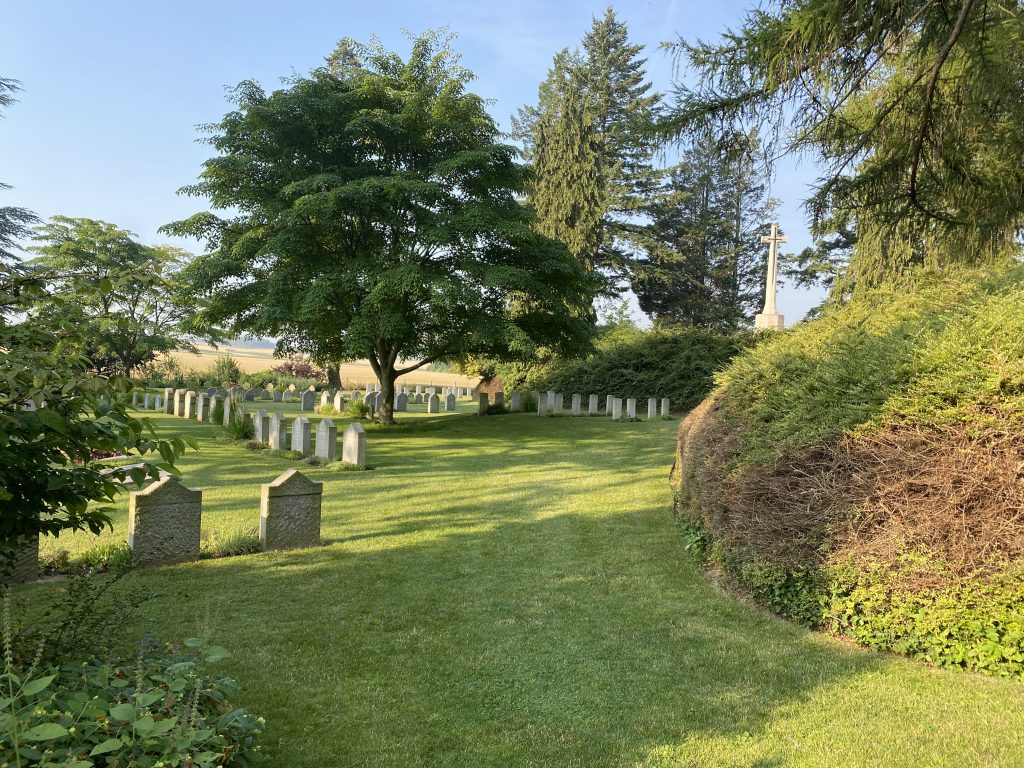
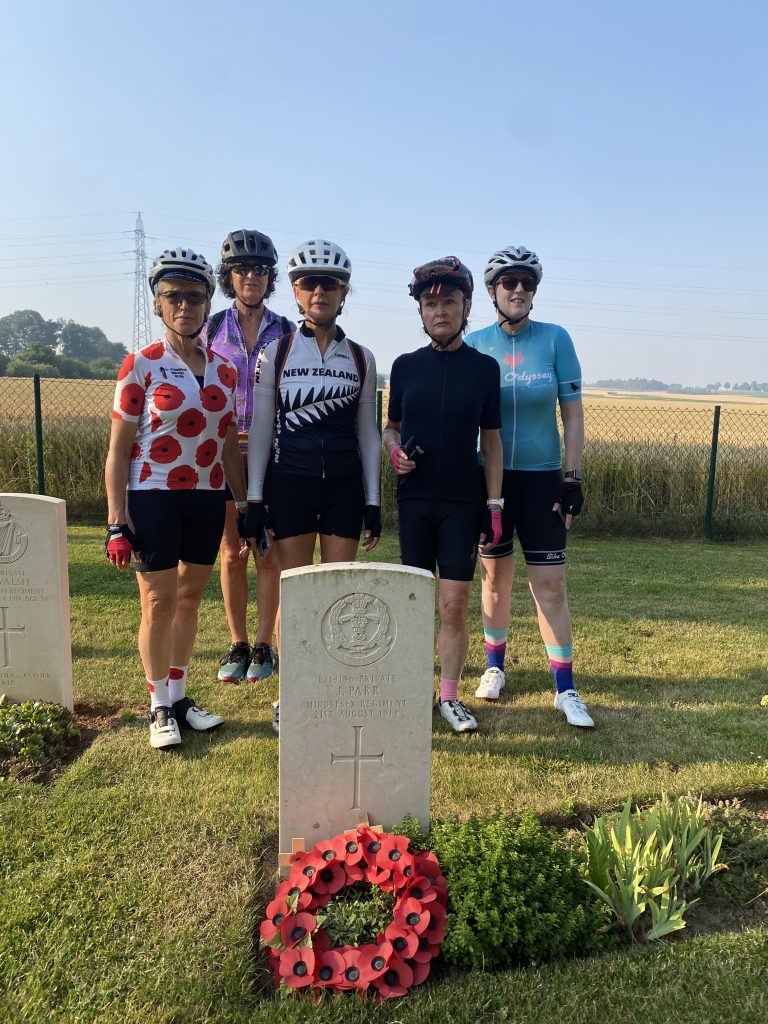
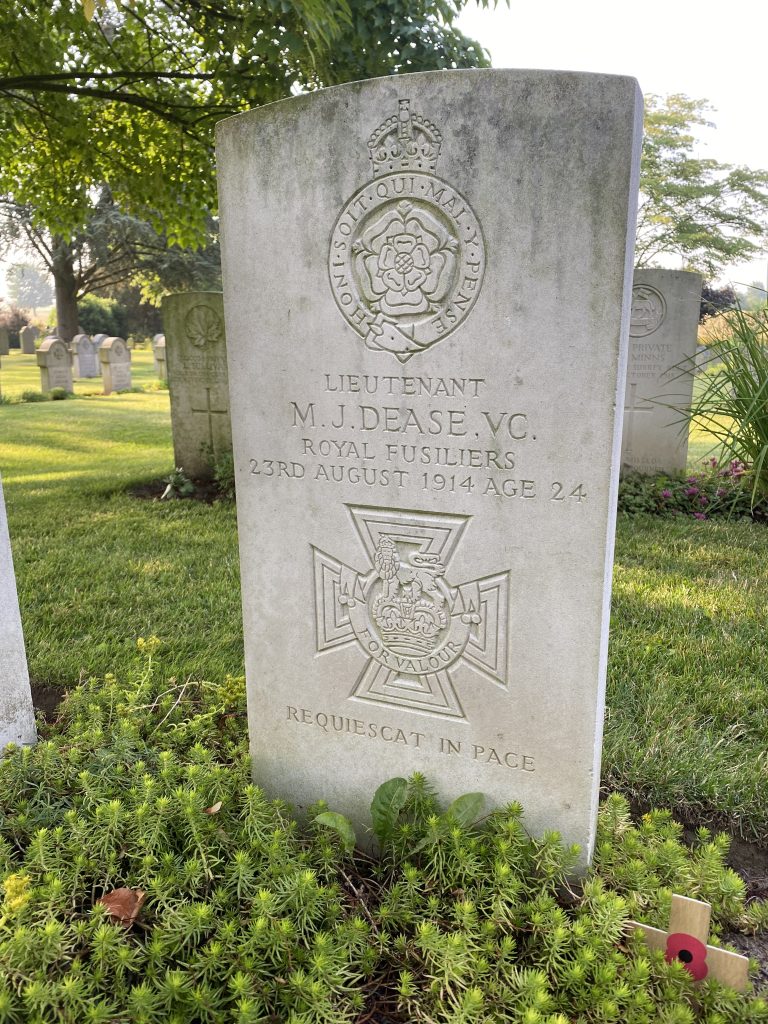
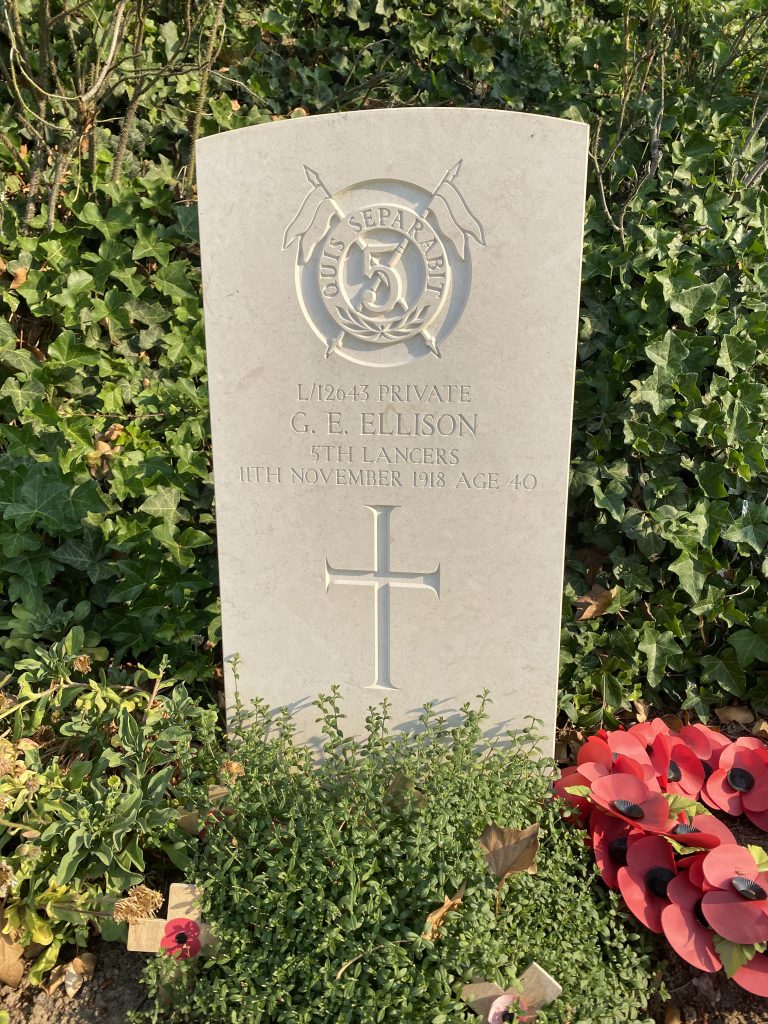
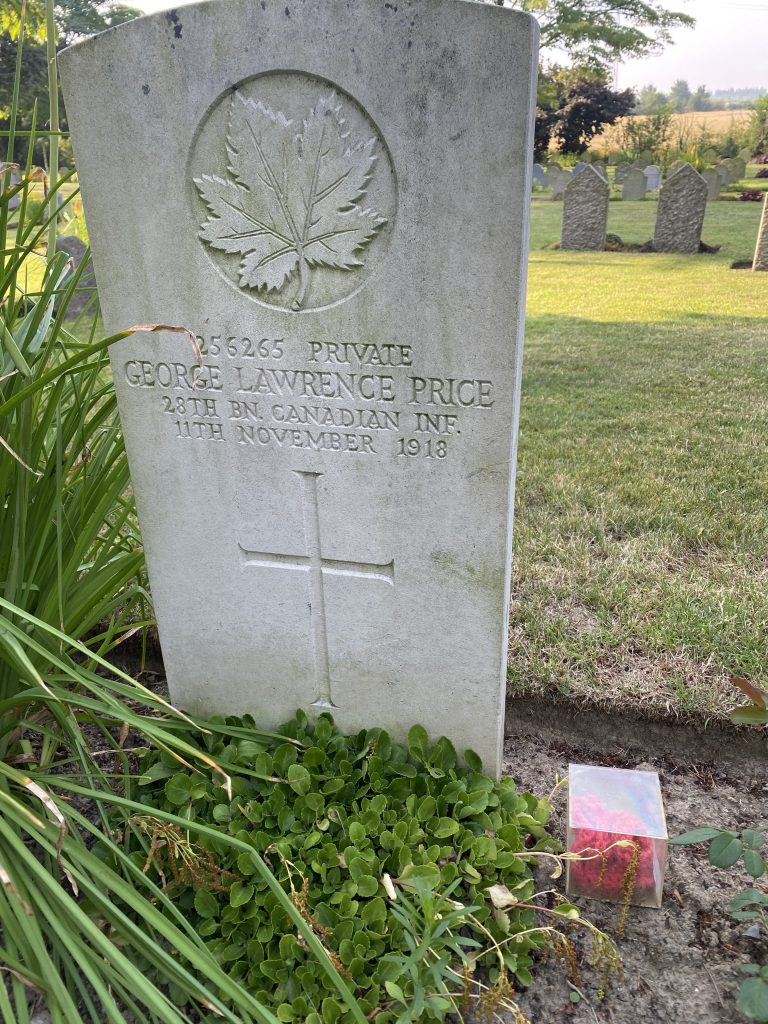

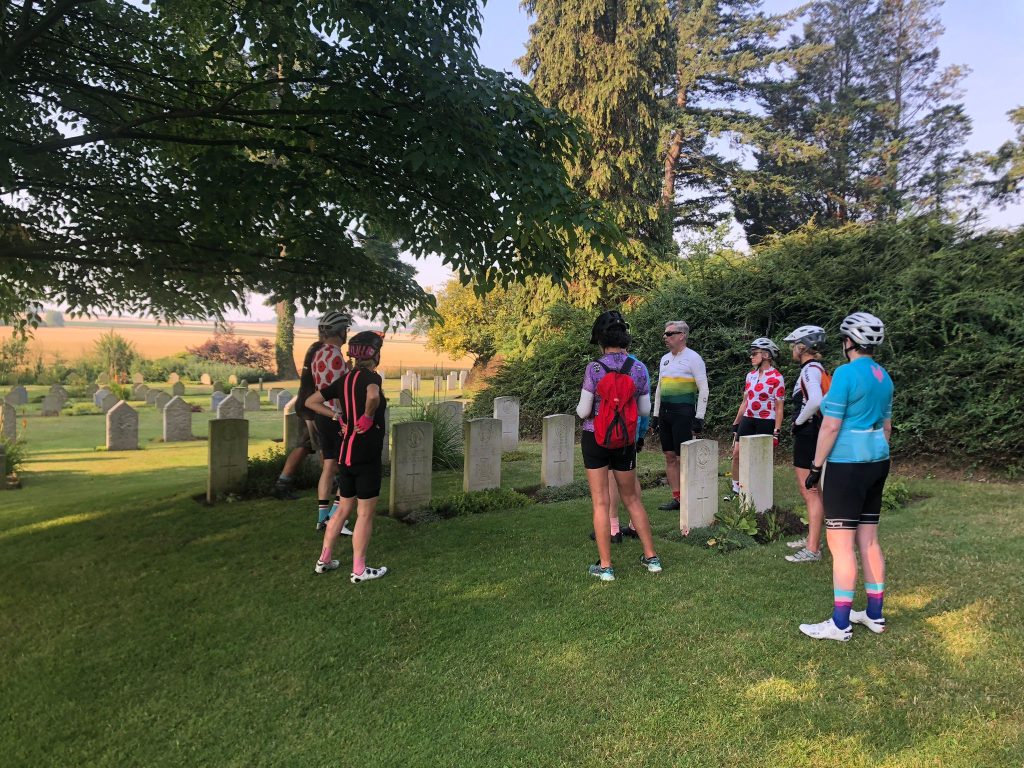
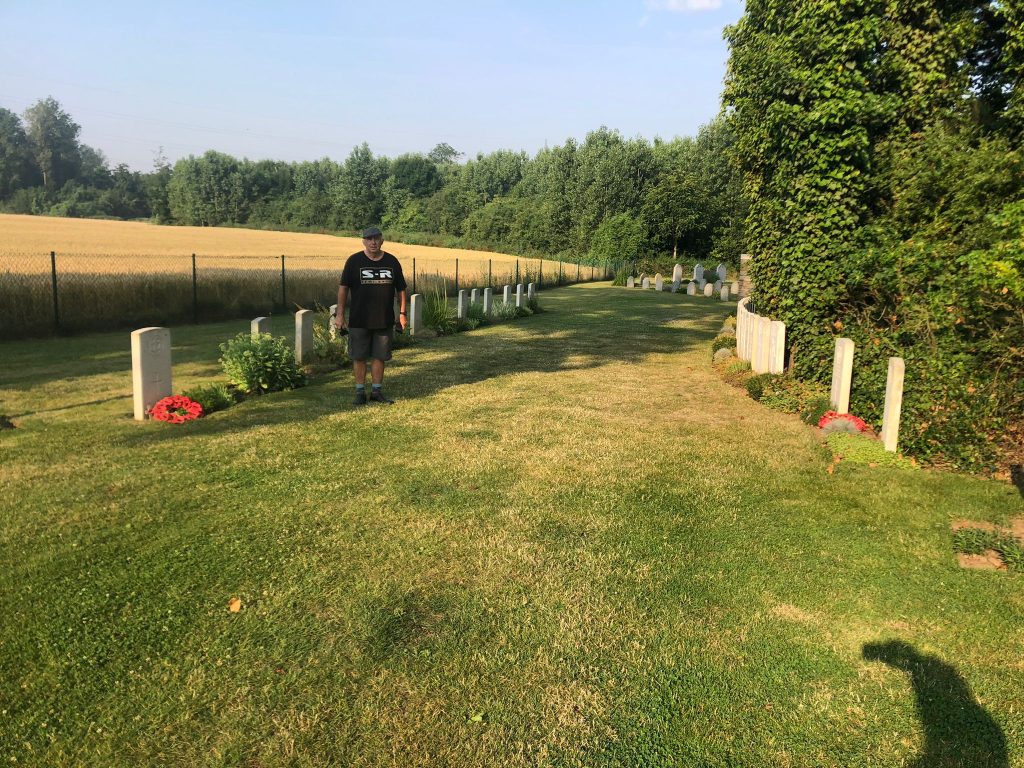
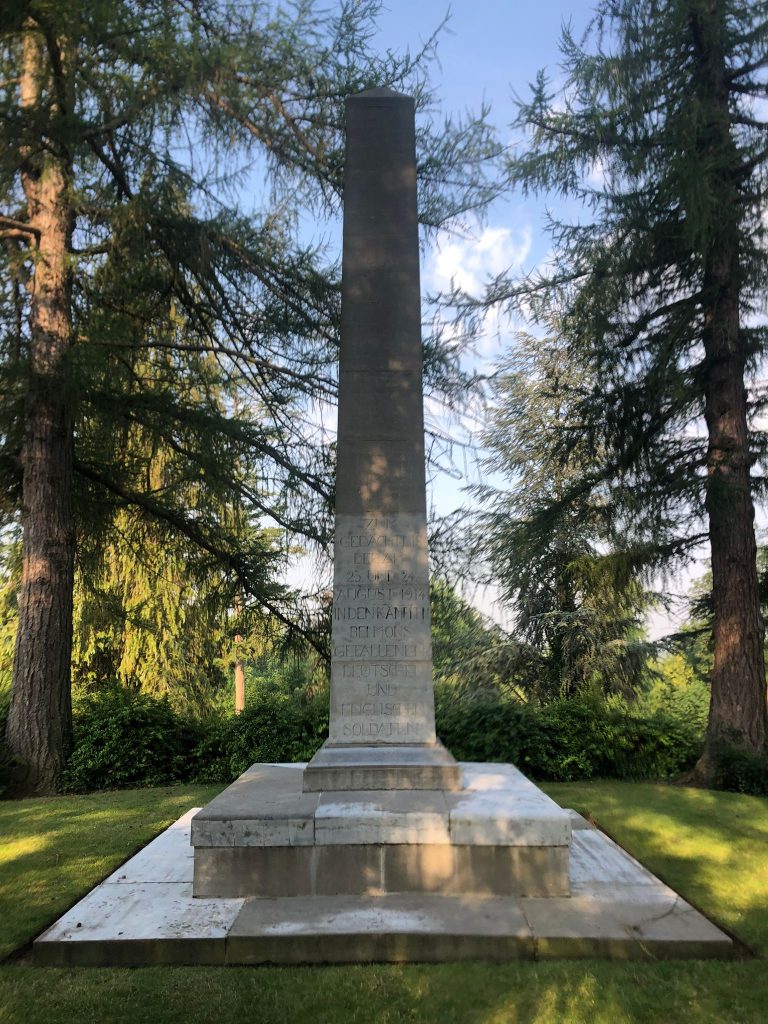
The Battle of Mons – By the evening of 22 August 1914, the men of II Corps of the British Expeditionary Force had taken up defensive positions along the Mons-Condé Canal, preparing for a major German attack expected to come from the north the next day. The opening shots of the Battle of Mons were fired at dawn on the morning of Sunday 23 August, when the 4th Battalion of the Middlesex Regiment repulsed German cavalry who were attempting to cross the canal over a bridge at Obourg. The early morning was misty and wet, and the British were still uncertain of the number of enemy troops on the far side of the canal. By 10 a.m., the day had brightened up, artillery fire had intensified, and it became clear that they were facing a large German force. Despite being outnumbered, the British soldiers on the south bank of the canal fought tenaciously throughout the day. Many were reservists who had returned to the army just weeks before, but they were well-drilled and disciplined, with a high level of rifle training. Their relentless fire inflicted heavy casualties among the Germans. Despite this stiff resistance, the sheer weight of German numbers and the accuracy of their artillery meant that the British struggled to hold their positions. By 10.30 a.m.the first German soldiers had crossed the canal and some British units had been forced back, and by mid-afternoon German infantry troops were crossing in force. By nightfall, the Battle of Mons was over and the British had begun a long, hard retreat towards Paris.
The ride to coffee was beautiful through backcountry lanes and beautiful Belgian villages


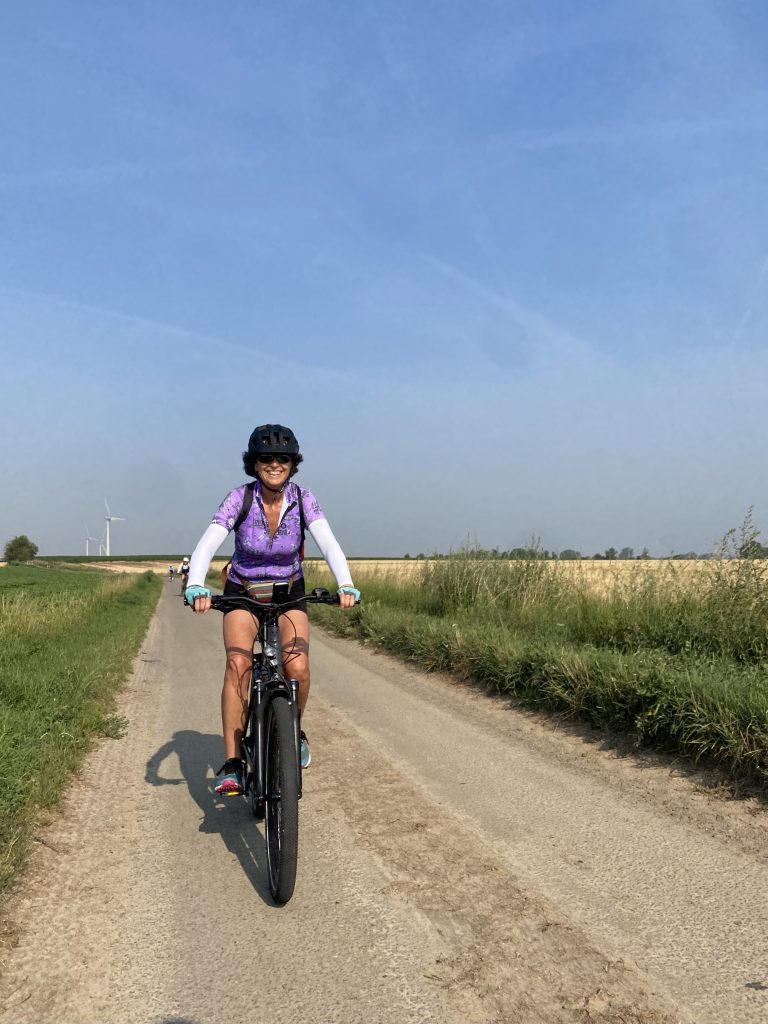
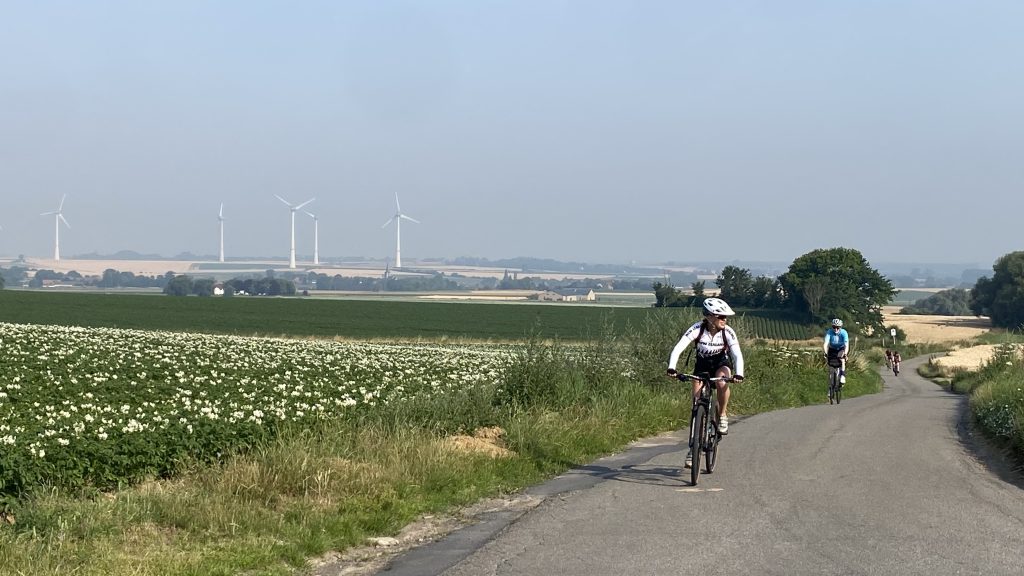
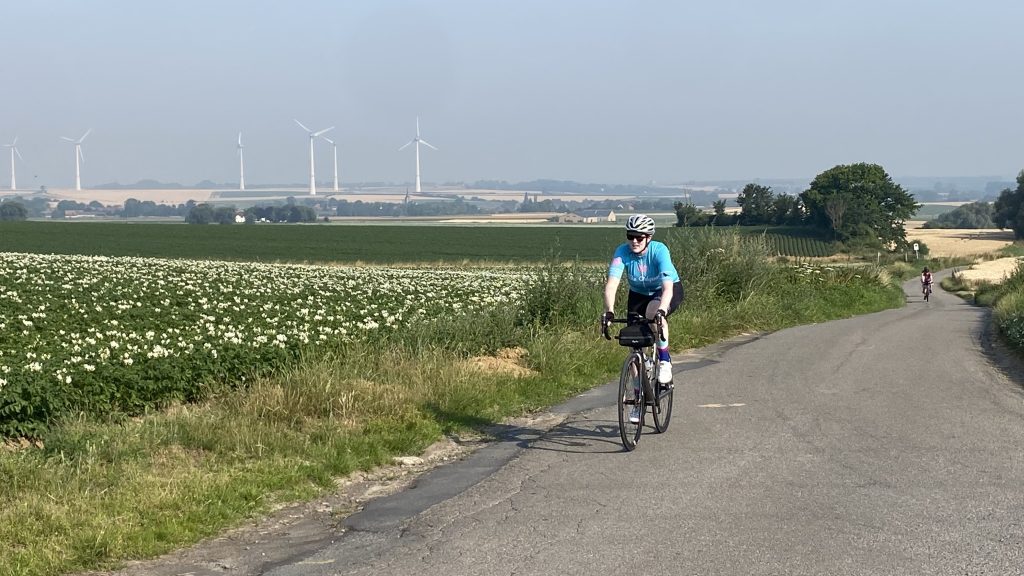
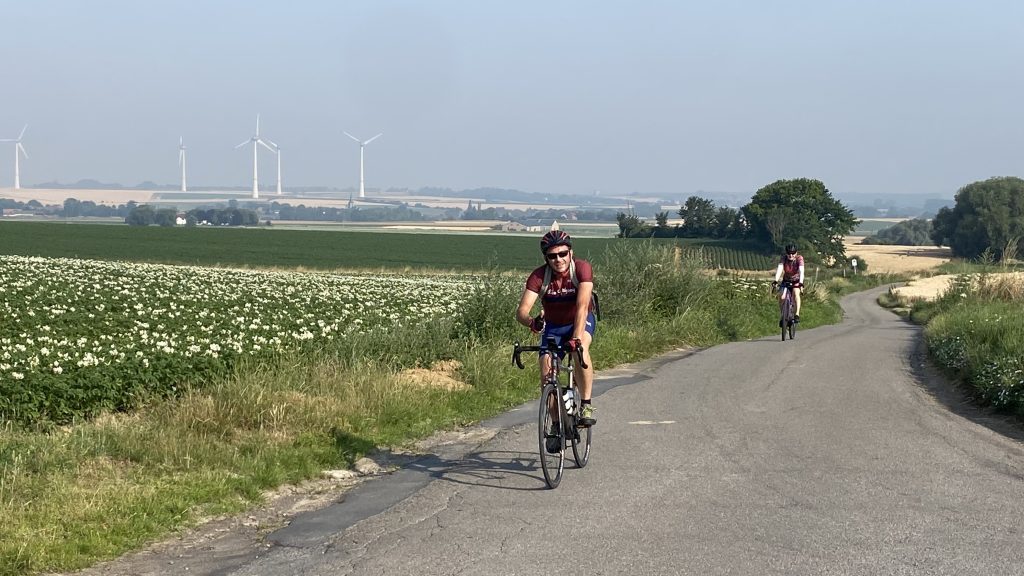
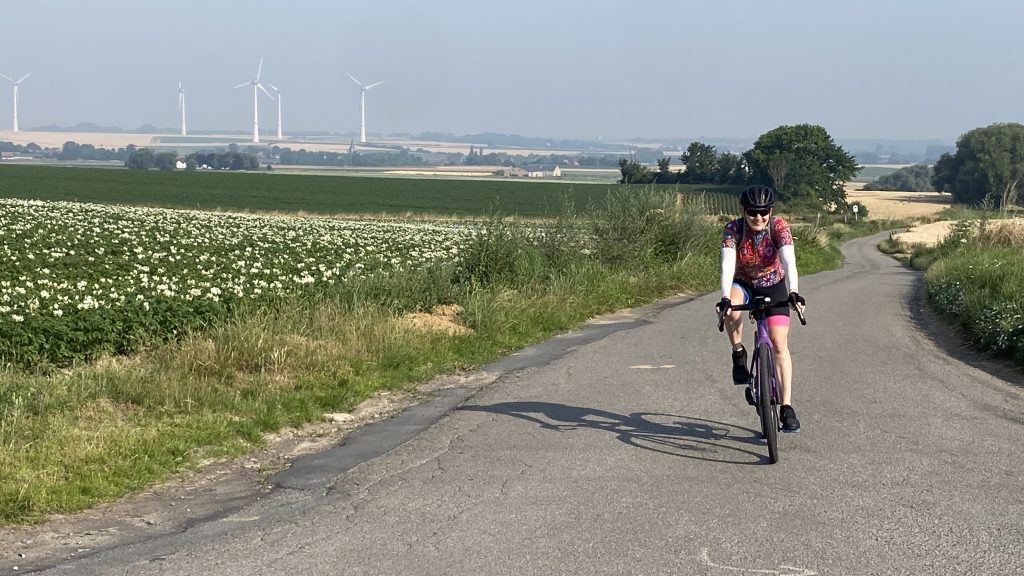
We had coffee in Thuin where the roads were definitely the worst we had experienced so far but they had a quaint tram line and a beautiful bike path out of town.

The ride to lunch was mostly along cycle paths
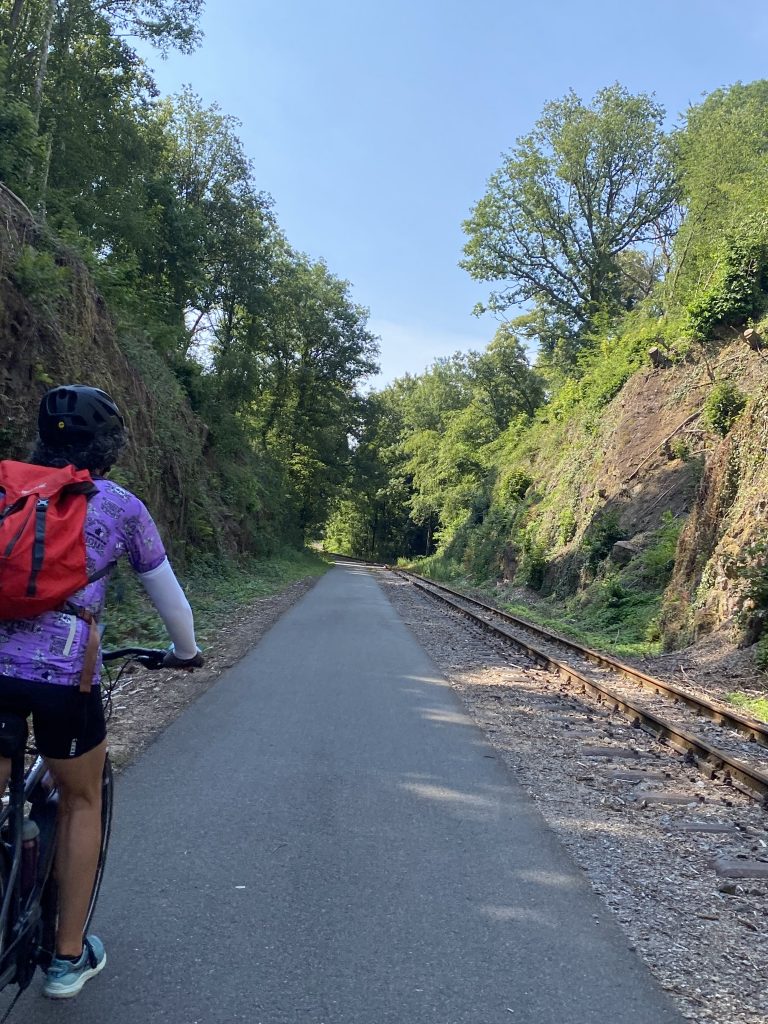
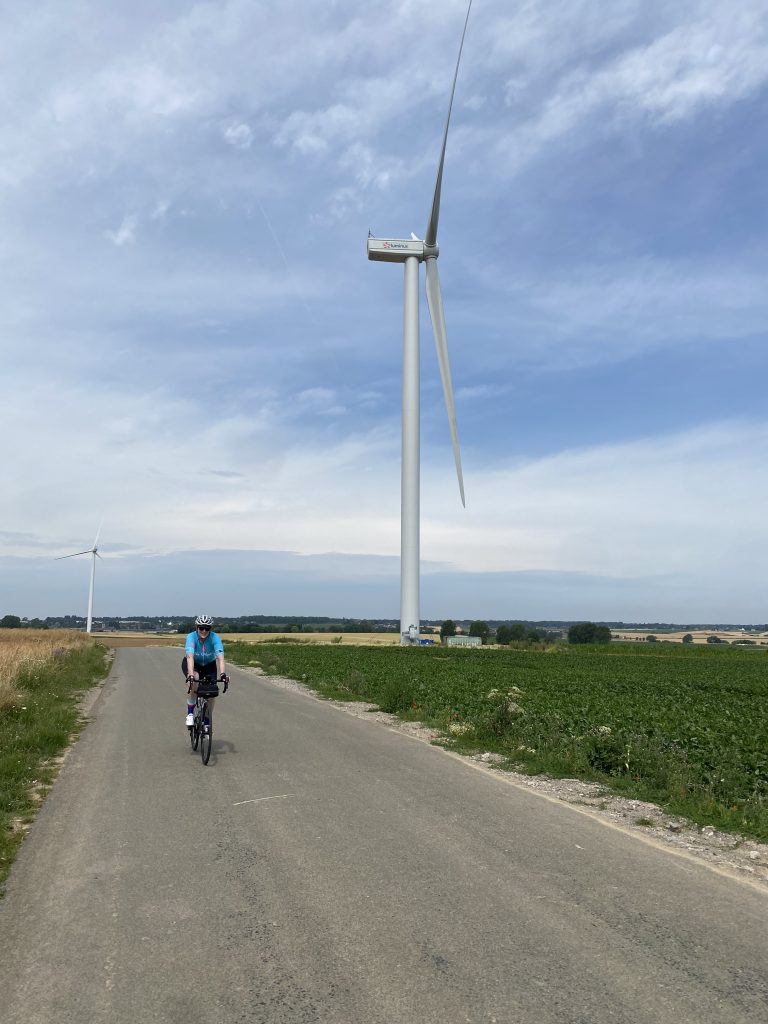
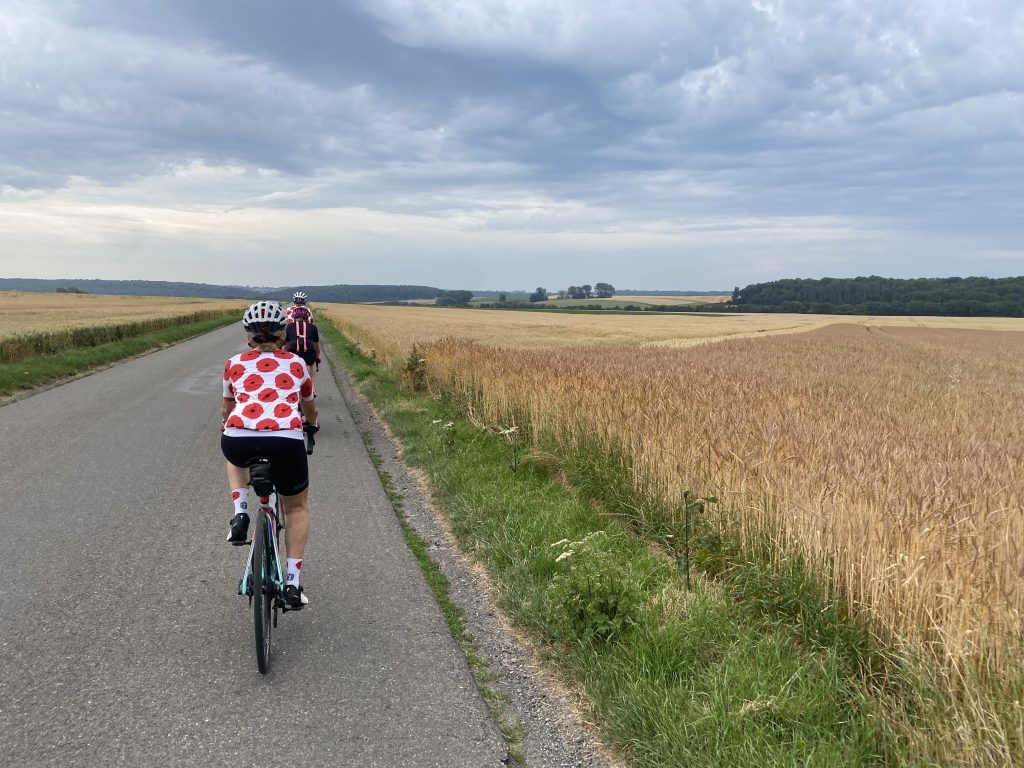
Lunch was by the memorial in the village of Hanzinelle. It was very hot and humid and I had not drunk enough. Luckily Teresa helped me out and I soon felt better. Whilst we were there, the expected weather front came through and the temperature dropped considerably and gave us a lovely tailwind for the afternoon… it went from one of the worst days to one of the best from that point as we tried to beat the rain to our destination.

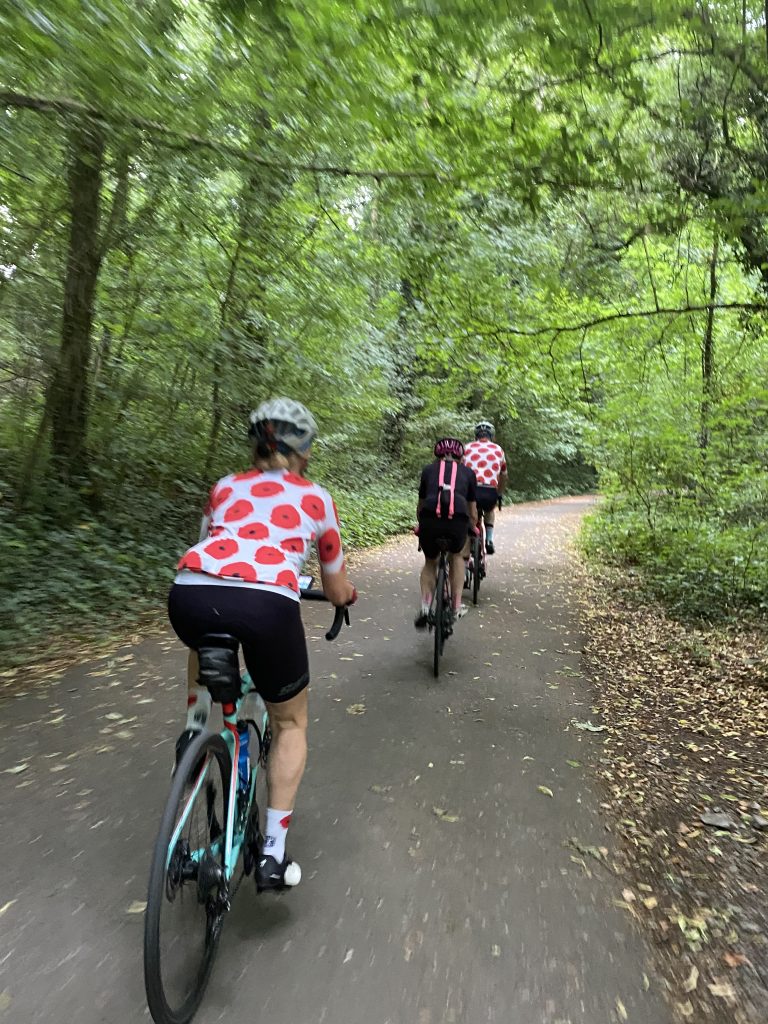
The Abbey of Maredsous was founded in 1872 in the Molignée Valley by Benedictine monks. Its architectural style is neo-Gothic and it matches perfectly with the wooded and undulating nature of the region.
Just like the Cistercian and the Trappist monks, the Abbey’s monks have agreed to follow the rule of Saint-Benedict, a course of action that makes them share their life between prayers, work and tradition of hospitality.

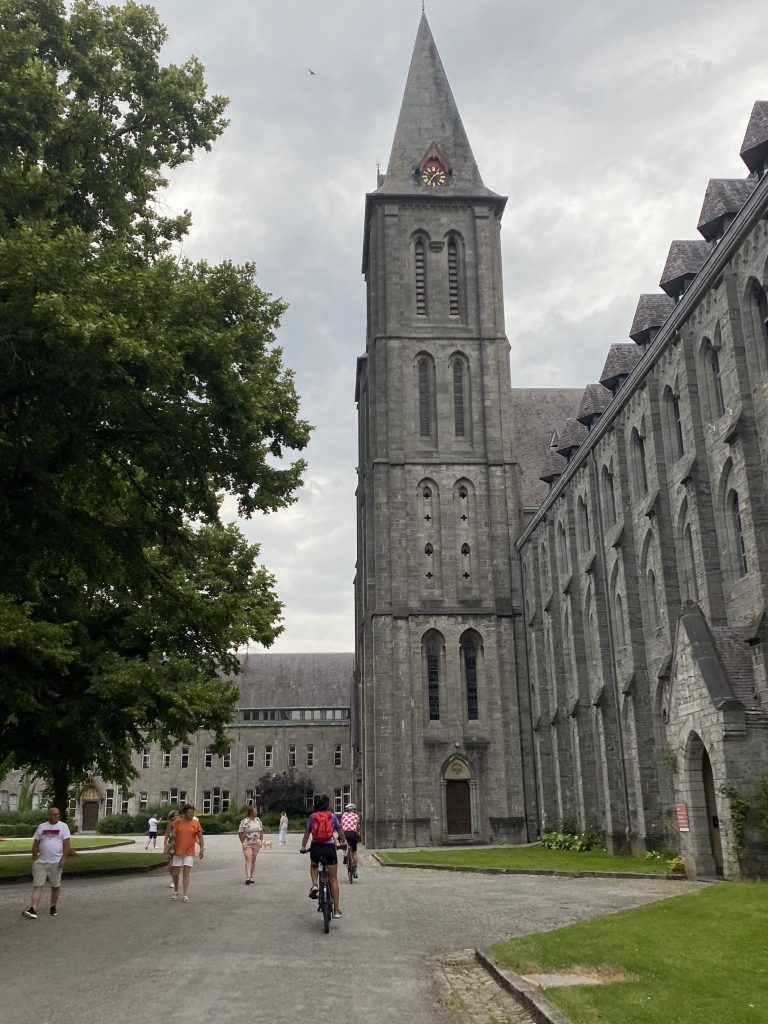
Dinant – the trip plans says it best…
Undoubtedly one of the most picturesque towns in Belgium’s Wallonia region, the winding river valley and beautiful buildings of Dinant look like they are straight out of a fairytale. Nestled in a cliff face on the Meuse River, the picture-perfect town dates back to the Middle Ages. Dinant is also known as the hometown of Belgium’s most famous beer, Leffe, and the birthplace of Adolphe Sax, inventor of the saxophone.
Collégiale Notre-Dame
Although this riverside church looks old, it was reconstructed twice during the last century, after being destroyed in both World War I and II. The original church gained collegiate status in 934. Its Romanesque successor bit the dust in 1228 when part of the neighbouring cliff collapsed on top of it, and it was reconstructed in the Mosan Gothic style. The big bulbous spire from 1697 is a majestic sight beneath the looming presence of the Citadel.
Notre Dame de Leffe
Pilgrims were always welcome at Leffe and in 1240 the canons decided to build a brewery for the preparation of a healthy, invigorating beverage (diseases like the plague ran rampant through the region at that time, and the boiling of water during the top fermentation process of the Leffe beer killed all germs). After the French Revolution, the abbey was re-established in 1929. The abbey church was reconstructed on the old farm grounds, as the beautiful 18th-century church had been destroyed. Each monk had a specific task and was entirely at the service of the parishes.
The Abbaye is part of our hotel.
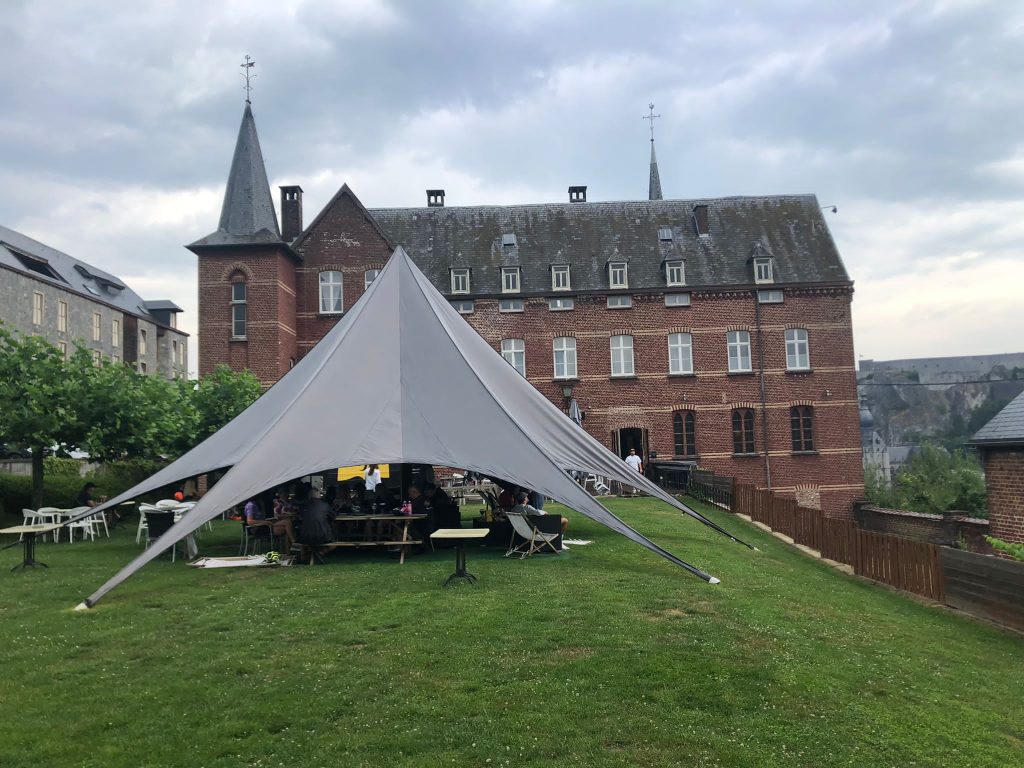
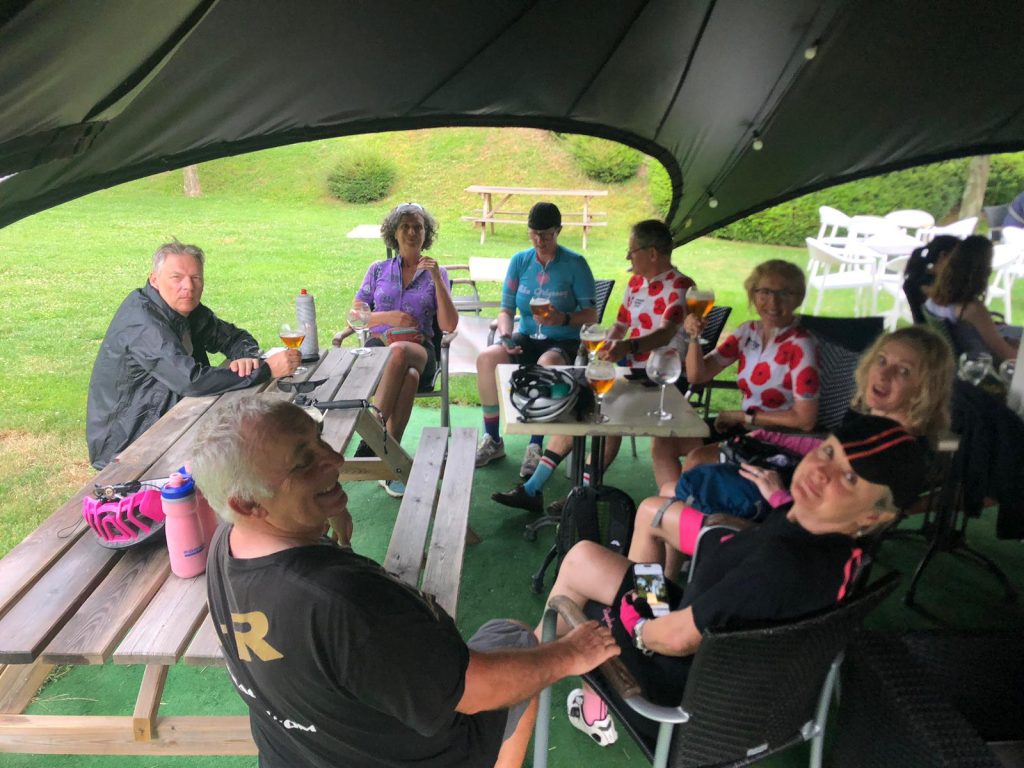


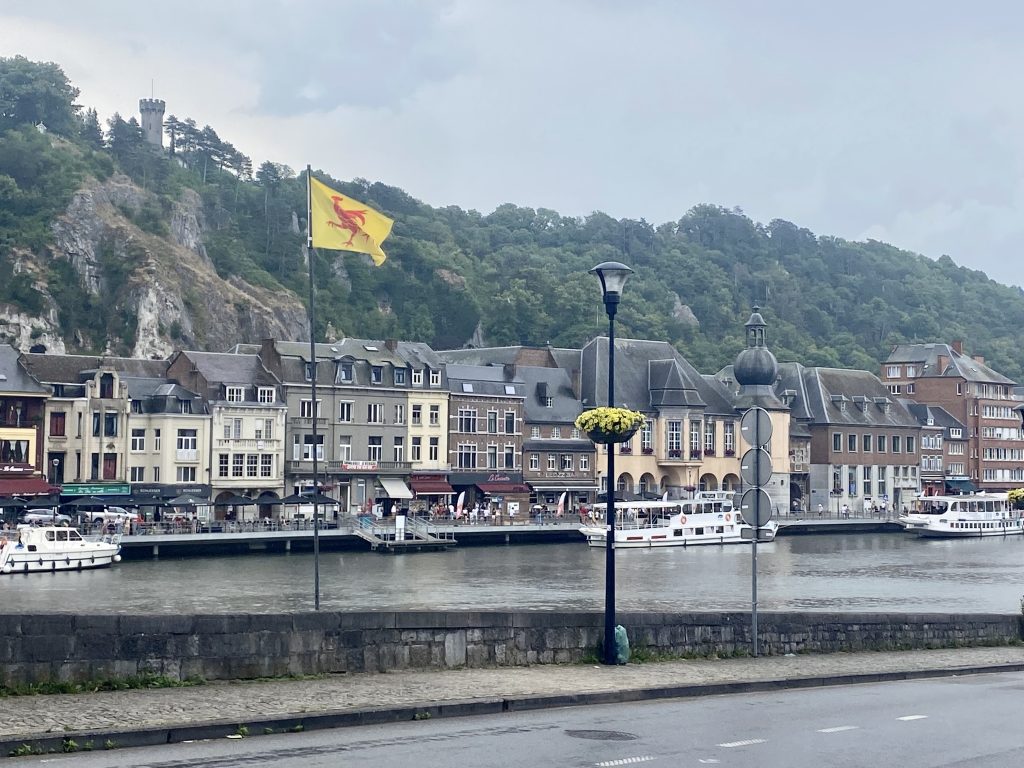
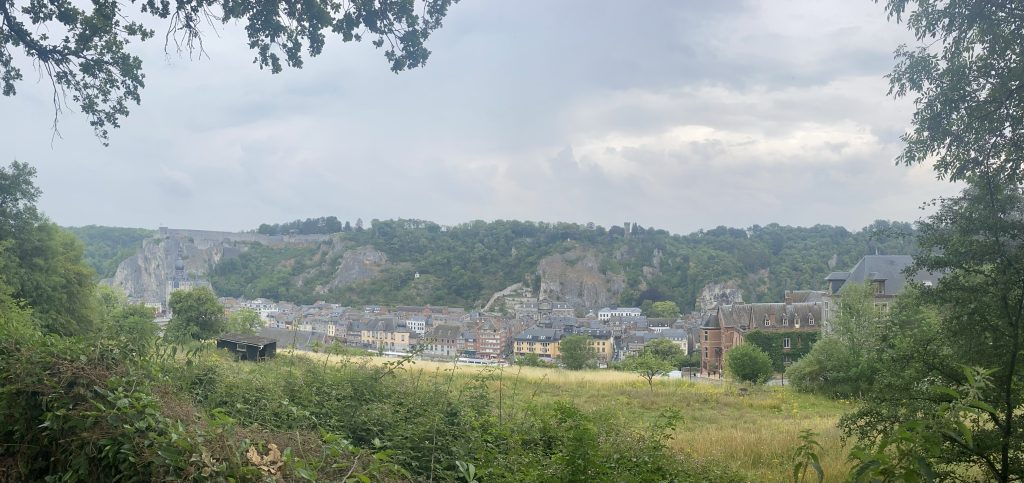
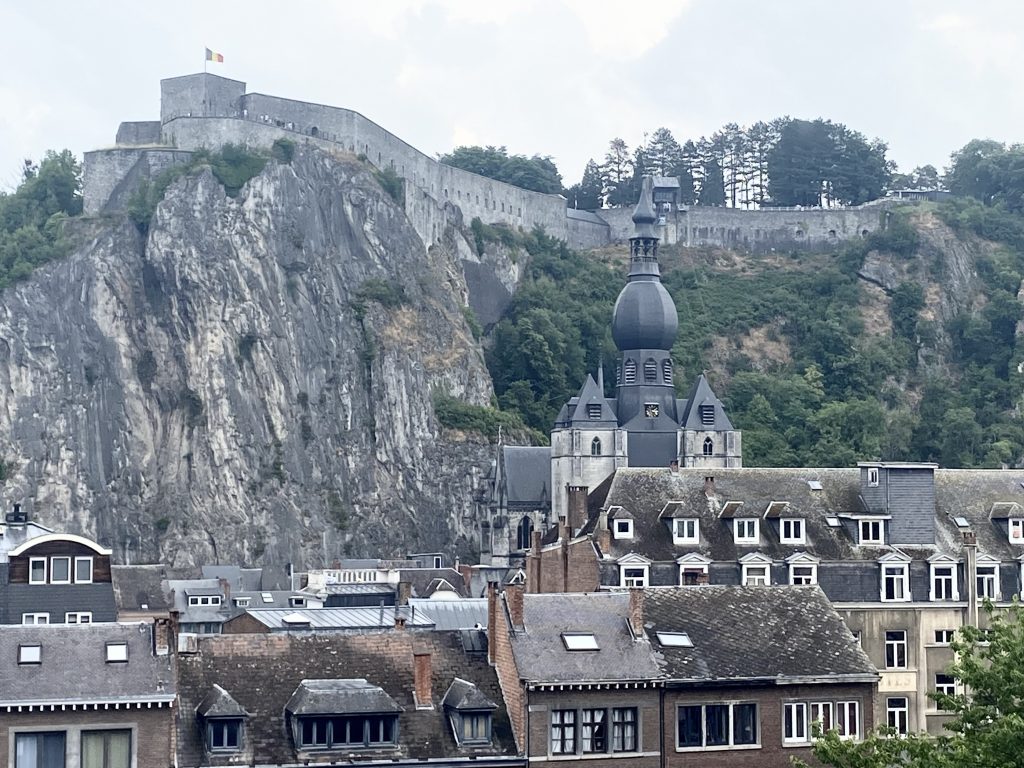
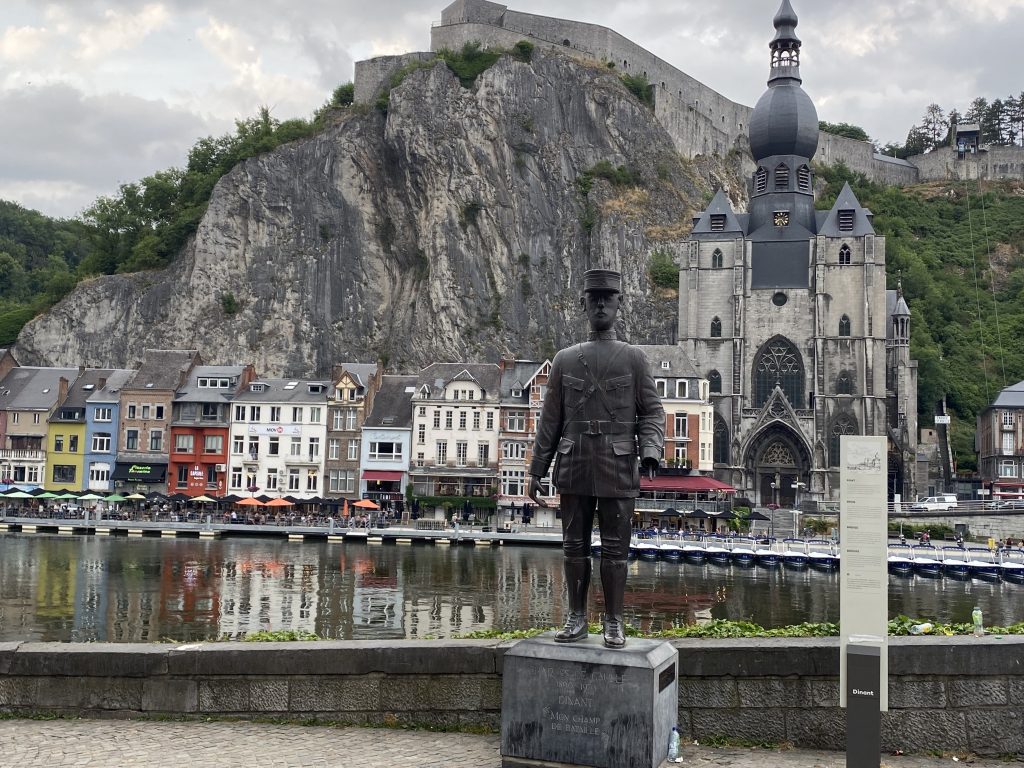
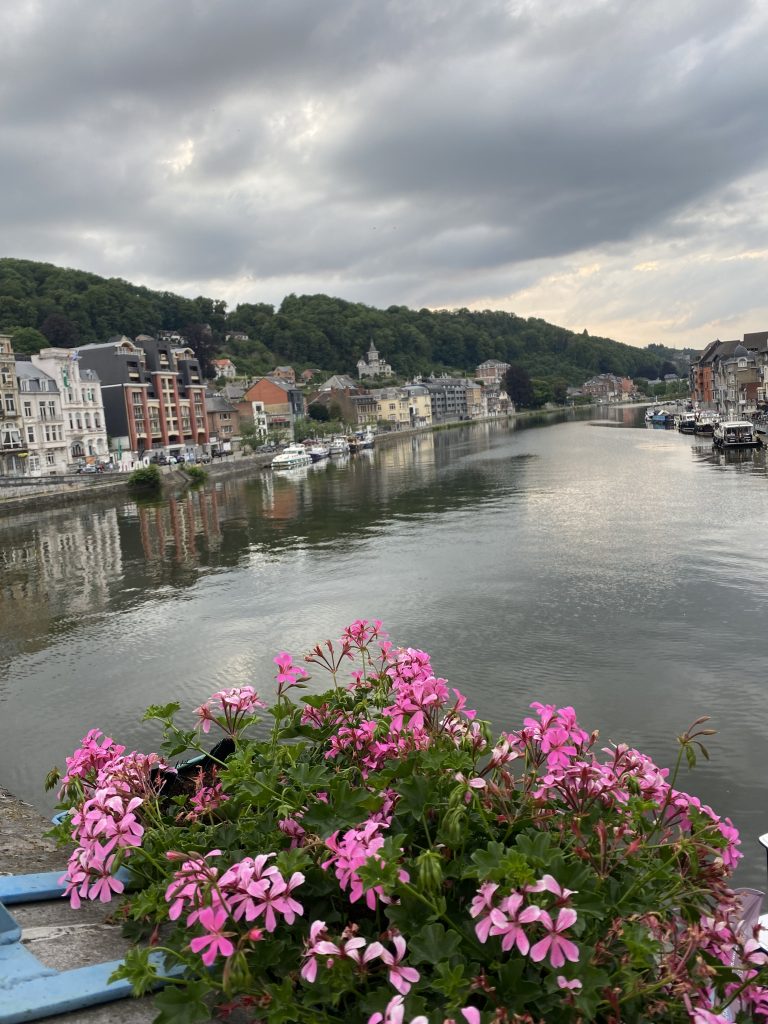
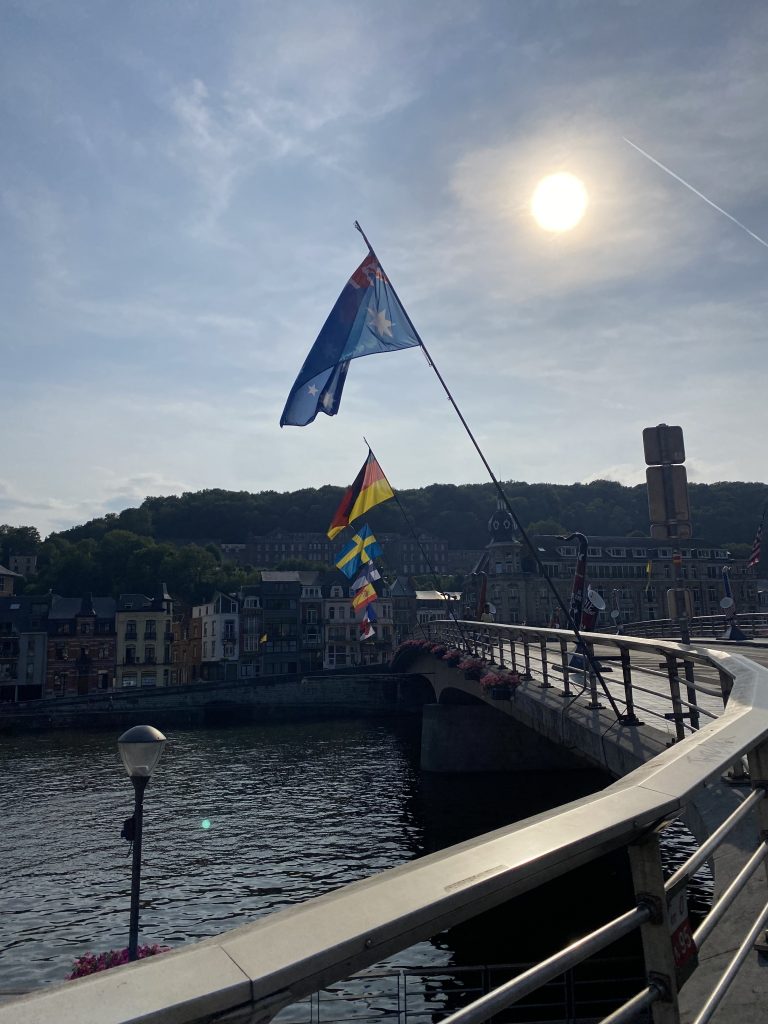
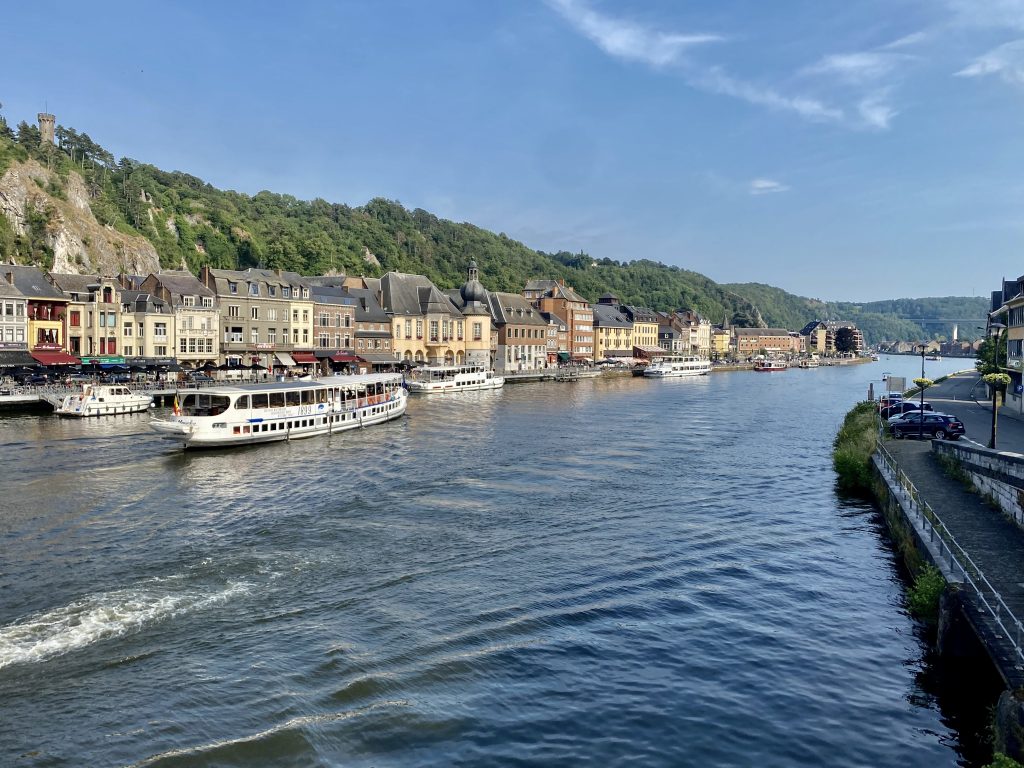


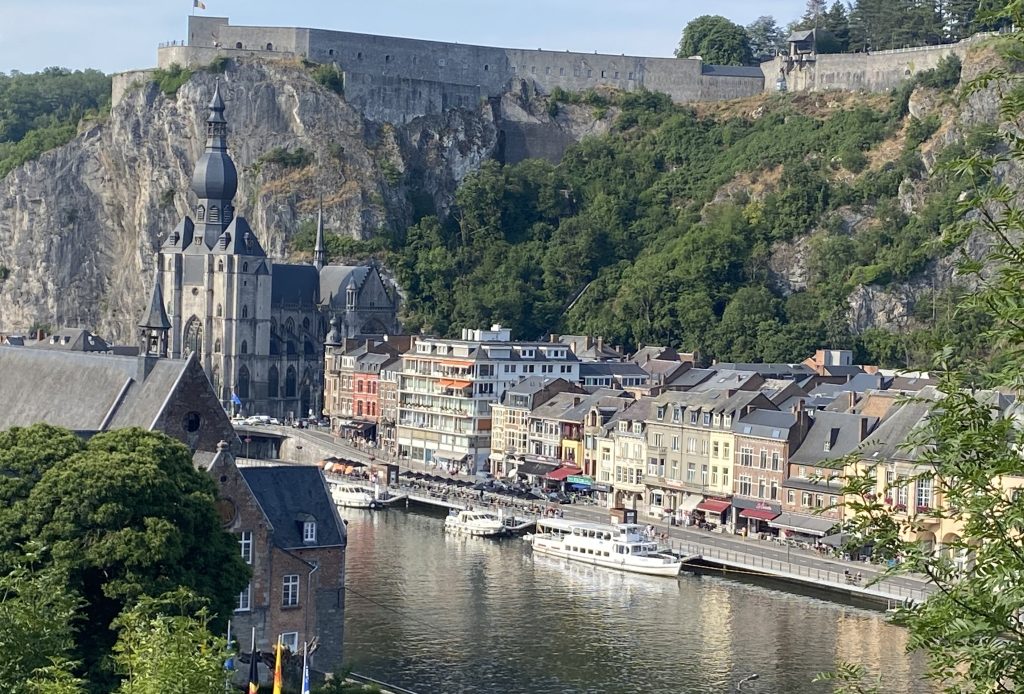
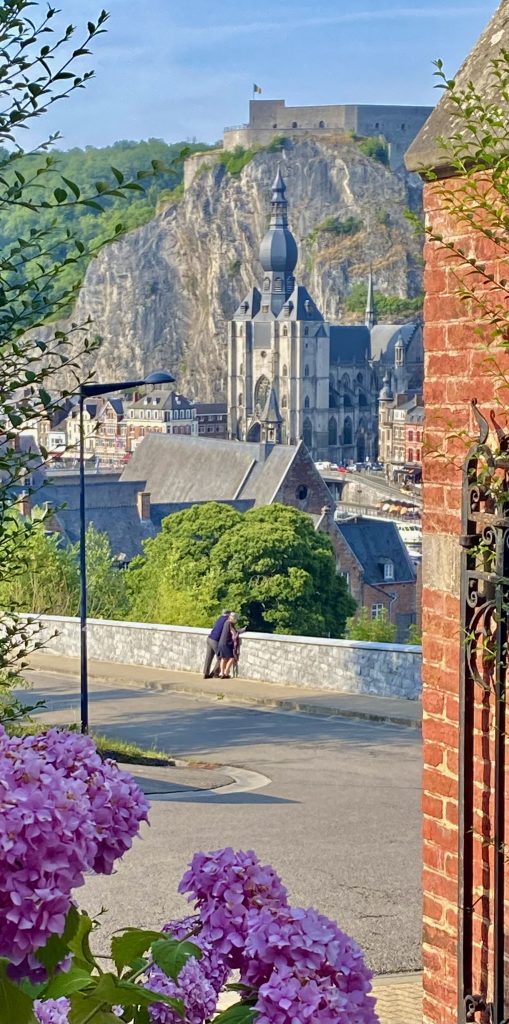
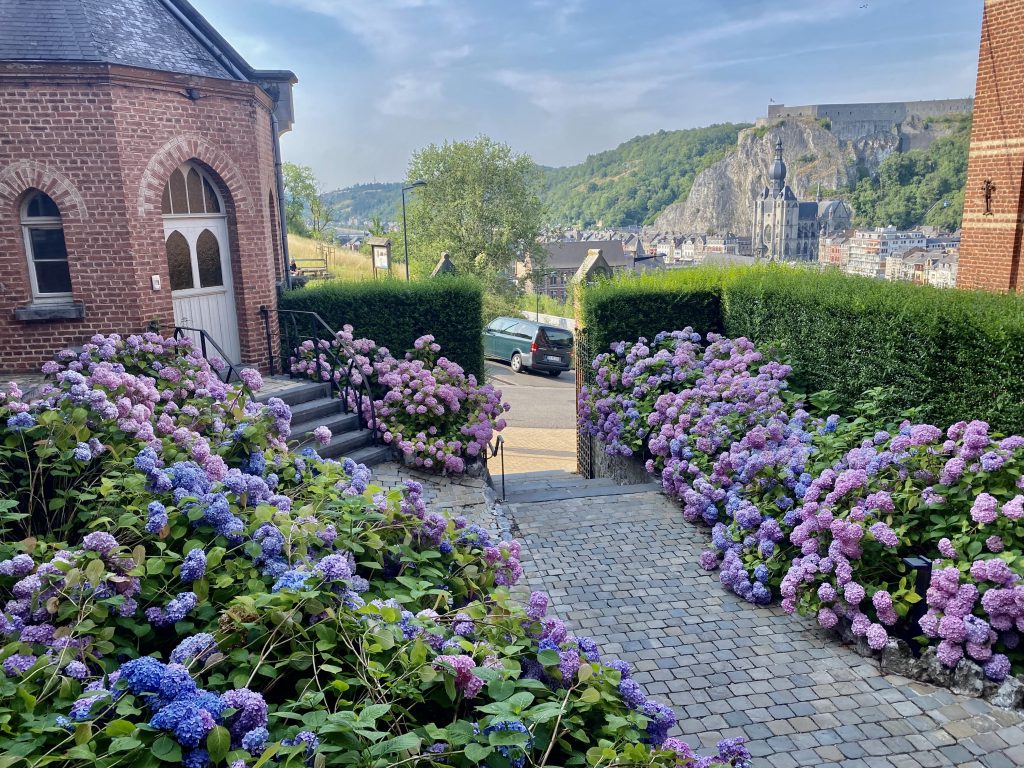
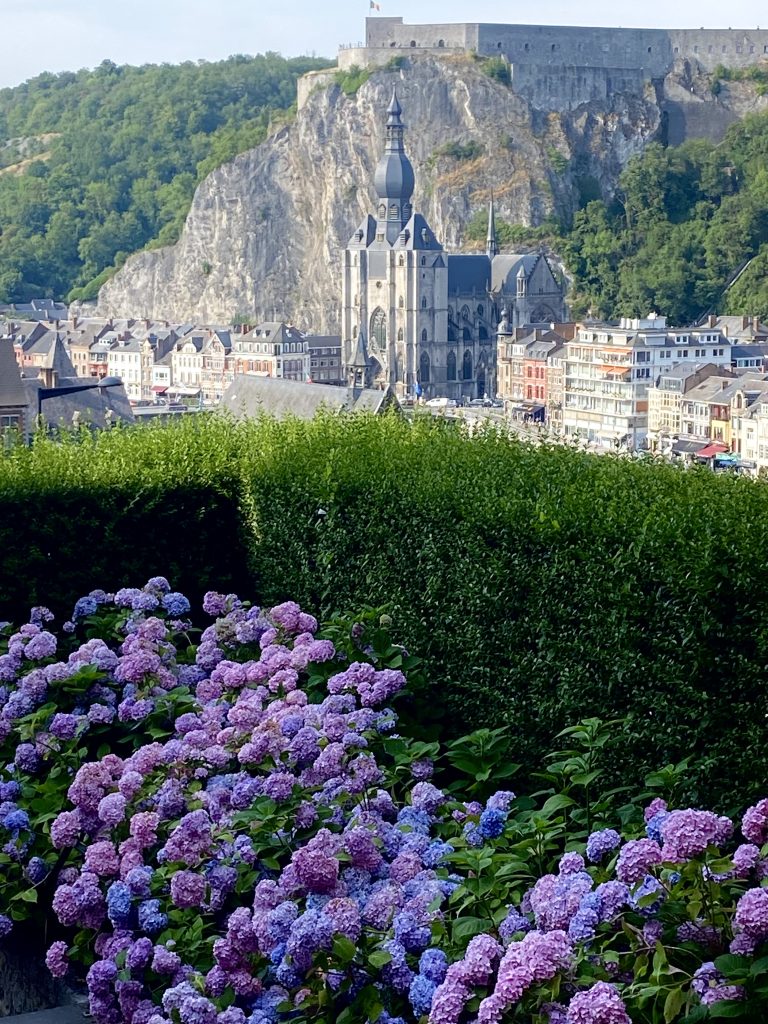
Dinner was at a small cafe called Le Cerf Vert. We were treated to classic hits which led to lots of singing and even some dancing from some of the group. It was an amazingly happy and spontaneous ending to a pretty tough day.

